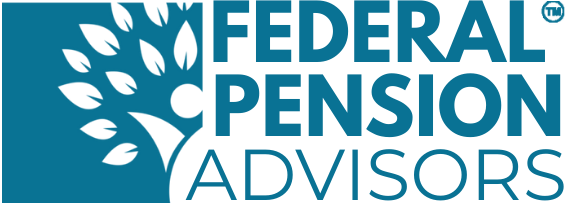You’re not alone; 4,359 federal employees booked their free review.

401(k) Max Contribution 2025: New Limits, Super Catch-Up Rules, and Smart Retirement Strategies
The IRS has officially raised 401(k) contribution limits for 2025 and this year, the changes are especially important.
Between higher contribution caps and the new super-catch-up opportunity under the SECURE 2.0 Act, employees now have more ways than ever to boost retirement savings.
In our experience advising federal and private-sector employees, most people miss out on thousands of dollars in tax-deferred growth simply because they don’t adjust their contributions when the IRS raises limits.
Here’s everything you need to know about the maximum 401(k) contribution for 2025, the new super-catch-up provision, and how to make these updates work for you.
Also read - 401k contribution limits 2026
2025 401(k) Contribution Limits at a Glance
Source: IRS & SECURE 2.0 Act, 2025
In our experience, employees who make small annual adjustments to reach the new limits often retire years ahead of those who leave contributions unchanged.
What the “Super Catch-Up” Rule Means for Ages 60–63
Starting in 2025, the SECURE 2.0 Act introduces a powerful savings opportunity: the super-catch-up contribution.
Eligible employees aged 60 to 63 can now contribute the greater of $10,000 or 150% of the standard catch-up limit.
For 2025, that means a maximum super-catch-up of $11,250, bringing total employee contributions to $34,750.
This higher cap applies only for four calendar years from the year you turn 60 through the year you turn 63.
Once you reach age 64, the limit reverts to the standard $7,500 catch-up.
In our experience advising late-career employees, this short four-year window can be a turning point. By maximizing contributions during these years, many clients have boosted their retirement accounts by over $50,000 before they stop working.
Employer Plan Updates Before 2025
While the new rule is designed to help older workers, it also creates some administrative challenges for employers and plan sponsors.
The IRS has not yet clarified whether the super-catch-up is mandatory for all 401(k) plans that already offer catch-ups, or optional for employers to adopt later.
Here’s what employers should know:
- Plan amendments may be required by December 31, 2024. Employers should review plan documents now to confirm whether the super-catch-up will apply automatically in 2025 or needs explicit approval.
- Plans that do not want to offer the super-catch-up next year may need to amend their documents before 2025 to avoid unintentional implementation.
- Qualified plans generally have until the end of 2026 to adopt final SECURE 2.0 amendments, but early action ensures clarity and compliance.
We encourage HR and payroll teams to consult their recordkeepers now implementing this rule requires tracking three separate age groups (50–59, 60–63, and 64+) and different limits for each.
Catch-Up Contributions: Your Fast Track After 50
For employees age 50 and older, the catch-up provision allows an additional $7,500 beyond the standard $23,500 cap.
That brings the total allowable employee contribution to $31,000 in 2025.
If you’re in your 50s, these extra contributions can significantly reduce taxable income while accelerating your path toward retirement.
We often see clients in their 50s and early 60s use catch-ups to make up for years when they couldn’t contribute the maximum. Even one or two full catch-up years can dramatically strengthen retirement readiness.
Combined Employee + Employer Contribution Limits
The IRS also caps the total annual amount that can go into your 401(k) from both employee and employer contributions.
- Under age 50: $70,000
- Age 50 and older: $77,500 (includes catch-up)
- Contributions cannot exceed 100% of your annual compensation
In our experience, employees sometimes reach their personal limit early in the year and stop contributing missing months of employer match. Spread contributions evenly throughout the year to capture every match dollar.
Highly Compensated Employees (HCEs)
If you earn $160,000 or more in 2025, you’re considered a Highly Compensated Employee (HCE).
Employers must perform annual testing to ensure fairness in plan participation.
If a plan fails this test, HCE contributions may be limited or refunded.
High earners should coordinate with HR to manage contribution timing. Overfunding early in the year can lead to unpleasant surprises come tax time.
Tax Benefits of Maximizing Your 401(k)
Key Advantages:
- Reduce taxable income: Traditional 401(k) contributions lower your current-year tax bill.
- Tax-deferred growth: Your money grows without annual taxation.
- Potentially lower tax rate in retirement: Withdrawals may fall into a lower tax bracket later.
- Employer match = free money: Matched contributions add instant returns.
- Roth 401(k) flexibility: After-tax contributions today can mean tax-free income tomorrow.
We’ve found that a balanced mix of Traditional and Roth contributions gives retirees flexibility to manage taxes and withdrawals more strategically.
How to Maximize Your 401(k) in 2025
Start Early, Contribute Consistently
Set up automatic payroll deductions to ensure steady contributions throughout the year.
Increase with Raises
When you get a raise, increase your contribution percentage before you get used to the new income.
Use the Catch-Up & Super-Catch-Up Windows
If you’re 50+, take advantage of the extra $7,500; if you’re 60–63, go for the enhanced $11,250 limit.
Review Annually
The IRS adjusts limits for inflation. Check your contribution rate each January to stay on track.
Check with HR
Confirm whether your employer’s plan has adopted the super-catch-up rule for 2025 not all will implement it immediately.
In our experience, employees who treat contribution increases as a yearly routine build far greater wealth over time than those who only adjust occasionally.
Inflation, IRS Adjustments, and Future Outlook
The IRS raises 401(k) limits periodically to help savers keep up with inflation.
The 2025 increase from $22,500 to $23,500 ensures that your real purchasing power in retirement isn’t eroded by rising costs.
As inflation stabilizes, future limit increases are expected to continue gradually, keeping pace with wage growth.
Each time limits rise, consider it an opportunity not a complication. Even small incremental increases compound dramatically over decades.
Final Thoughts
The 401(k) max contribution limits for 2025 including the new super-catch-up for ages 60–63 create powerful opportunities to strengthen retirement savings.
Whether you’re in your 30s just starting or in your 60s closing the gap, taking full advantage of these IRS changes can have a lasting impact.
In our experience advising federal and private-sector employees, the difference between an average retirement and a comfortable one often comes down to consistent, informed contributions especially in the final decade before retirement.
If you’d like help determining how much you can contribute this year or how to coordinate your 401(k), Roth, and FERS benefits we can help.
Schedule a free consultation with our retirement experts.
We’ll analyze your contribution options, project your long-term growth, and create a personalized savings plan built for 2025 and beyond.

Key Takeaways
- 2025 employee limit: $23,500 (under 50).
- Catch-up (50–59): +$7,500 (total $31,000).
- Super catch-up (60–63): +$11,250 (total $34,750).
- Combined limit: $70,000 under 50, $77,500 for 50+.
- Employers may need plan amendments before 2025 to support new rules.
- Check with HR to confirm whether your plan adopts the super-catch-up this year.
FAQs
What is the 401(k) contribution limit for employees over 50?
Employees 50 and older can contribute up to $31,000, including a $7,500 catch-up.
What is the super-catch-up contribution for 2025?
Ages 60–63 can contribute the greater of $10,000 or 150% of the standard catch-up, totaling $11,250 in 2025.
Will all employers offer the super-catch-up in 2025?
Not necessarily. Some may implement it automatically, others may amend plans later. Check with your HR department or plan provider.
What is the total combined contribution limit for 2025?
$70,000 for employees under 50 and $77,500 for those 50 or older (employee + employer).
Desclaimer -
The information provided is for educational purposes only and should not be considered financial, tax, or legal advice. Contribution limits, IRS rules, and plan provisions can change, and individual circumstances vary. Always consult a qualified financial advisor, tax professional, or your plan administrator before making decisions about 401(k) contributions, catch-up contributions, or retirement planning strategies.
Content reference -
IRS.gov


Get Updated
Subscribe to our weekly updates for the latest on retirement planning, federal benefits, exclusive webinars, and more!
Download Federal Retirement: Step-by-step Checklist
This comprehensive guide will help you understand your federal benefits, optimize your savings, and plan for a comfortable future.



.png)






%20VA%20%26%20Private%20Options%20Explained.jpg)

